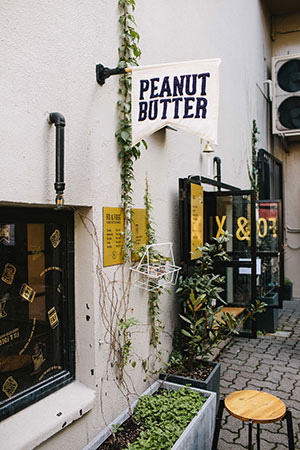Our current economy

The region has Aotearoa New Zealand’s second largest economy, with a GDP of $43,326 million in 2021 (Wellington region economic profile, Infometrics 2022) and the second highest GDP per capita at just over $74,000. Our largest contributors to GDP are reflective of us having a strong knowledge-based economy and being home to the capital.
There are just under 60,000 companies in the region. Following the national pattern, by far the largest share of our businesses (70%) have no employees (these might be businesses where the owner is responsible for most business processes themselves; it can also include shell/dormant companies that have a small amount of turnover), 16.5% have 1 to 5 employees, and just 0.7% have over 100 employees (Stats NZ: business demographic data).
Our largest contributors to GDP are:
- Public administration and safety (13.1% of GDP) which reflects the number of government agencies based in the region
- Professional, scientific and technical services (12.8% of GDP). We have a strong IT and digital technology sector that adds to our knowledge-based economy
- Financial and insurance services (8.3% of GDP)
- Manufacturing (7.2% of GDP) is a an important sector across our region, especially in the Hutt Valley and Masterton
- Health care and social assistance is our fifth top contributor to GDP at 6.0%
We’ve also got a vibrant visitor economy, built around wild natural spaces, vineyards, cafes, restaurants, and local food producers, and some world class arts and cultural offerings. Our visitor economy (food and accommodation sector) accounts for 1.6% of the region’s GDP (Wellington region economic profile, Infometrics 2022).
WellingtonNZ is leading the development of an economic plan for the region which will sit alongside Te Matarau a Māui in providing direction for our future prosperity and well-being.
Overview of our region
Kāpiti
(Population 56,000, of which 15% Māori)
The sub-region is growing quickly with more people moving to the region, although it has an older than average population, with a quarter over 65.
Kāpiti hopes to build on its attractiveness to create a strong visitor sector and has a destination management plan in place.
There is also an important value-added food production sector, which is part of this plan.
Kāpiti is home to Te Wānanga o Raukawa which delivers learning in a kaupapa and tikanga Māori framework. The region has identified a need for other local tertiary education provision.
It is also home to the Maoriland film festival and film sector.
The health and aged care sector is a big employer in the area, partly due to the ageing population.
The sub-region has developed the Kāpiti Coast Workforce Plan 2022(external link)
Wairarapa
(Population 47,900 of which 18% Māori)
Food is of great importance to the sub-region; agriculture (sheep and beef farming) is the main source of income in the region, and there is also a significant wine industry.
There is also a growing value-added food and beverage sector, which is driving skills needs in technology.
The sub-region also has an important visitor sector, especially food-related tourism, and is a popular destination especially for Wellington city visitors.
The Wairarapa is growing rapidly, and housing shortages are driving demand for construction workers.
Manufacturing is a key employer, especially in Masterton.
There are limited tertiary education options, and there is work underway to utilise the old Taratahi agricultural college as a hub for vocational education.
The sub-region is implementing its Wairarapa Workforce Plan 2020(external link)
The Hutt Valley
(Population 155,000 of which 18% Māori)
Comprises Hutt City and Upper Hutt, each with its own city council.
Many Hutt people work in public administration and safety.
Construction is also a large employer, and there are major projects planned and underway, for example Riverlink in Lower Hutt.
Infrastructure jobs are going to be very important to the region, and council / employer / trainer partnerships are being built.
The Hutt is home to a large STEM sector. As well as a high value manufacturing sector, this includes a growing digital gaming sector, and soon, the screen sector with the Lane St studios coming online.
Two of the country’s key research institutions, GNS Science and the Callaghan Institute, are in the Hutt.
Wellington City
(Population 213,000 of which 8.6% Māori)
Lots of Wellington city people work for government, the city’s biggest employer.
The city’s economy is high-value and high-skills based, and digital skills are in big demand across IT companies, gaming and other digital start-ups, and the financial sector. The screen sector is also a key part of the city’s economy and identity.
The city hosts three universities, and many other education and training providers, and the education sector employs many Wellington people.
Wellington has a vibrant food and visitor sector which provides many jobs.
Porirua
(Population 59,800 of which 22% Māori)
Porirua has a diverse and younger than average population which is growing rapidly.
While a significant proportion of people work in public administration, the next biggest employer is construction, being driven by growth, and large projects are planned such as city centre revitalisation, proposed greenfield housing developments and the eastern Porirua regeneration.
Many people also work in education, and Whitireia/WelTec polytechnic is based in Porirua, delivering a range of courses including construction, nursing and midwifery.
Ngāti Toa iwi are leading local initiatives in construction and training.
A Porirua City Employment and Skills Plan 2021 is complete.

